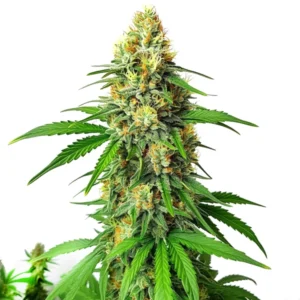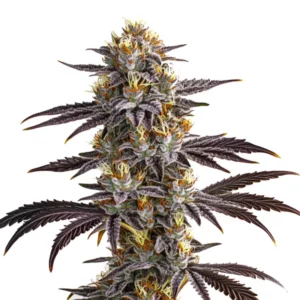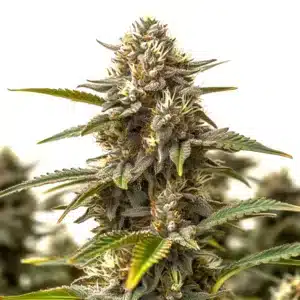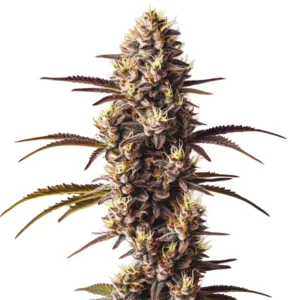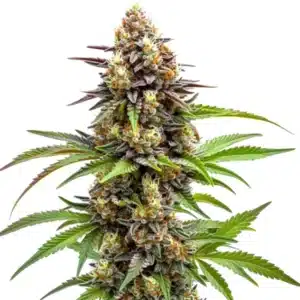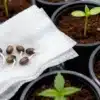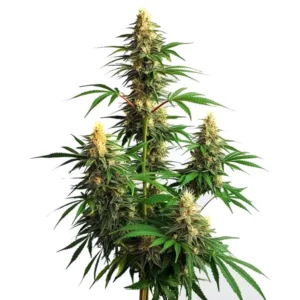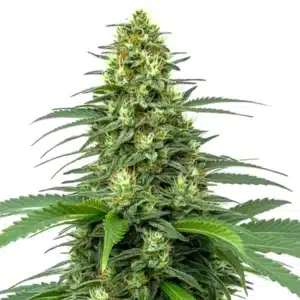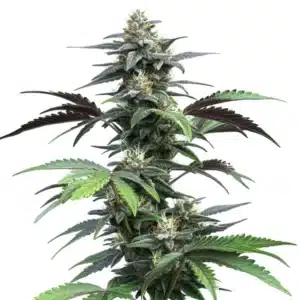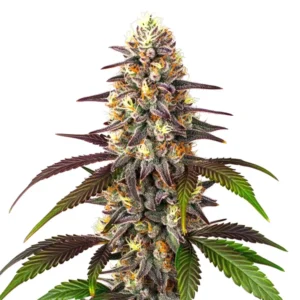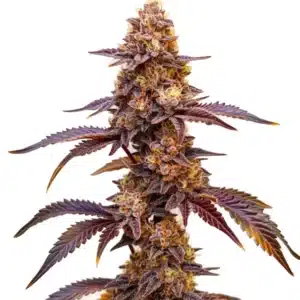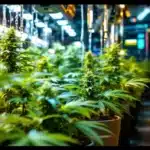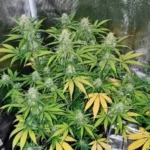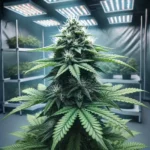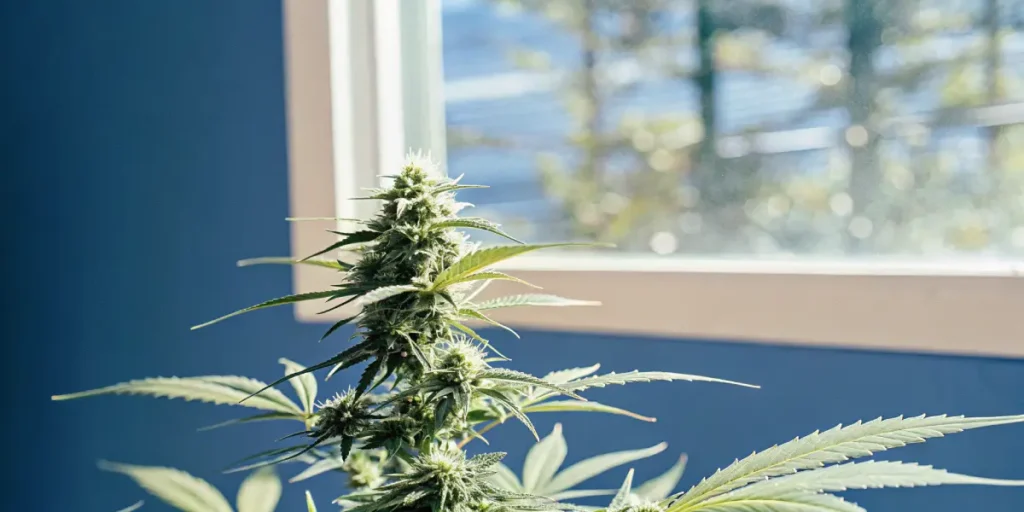
Should You Top Autoflower Cannabis Plants?
For both novice cannabis growers and seasoned cultivators, the question often arises: should you top autoflower cannabis plants? This method of pruning can be a game changer, but it requires a delicate balance. Topping involves cutting the main stem to encourage the plant to grow more branches. With autoflowers, this technique has unique implications due to their rapid life cycle.
Autoflowering cannabis plants have a predetermined life span. They shift from the vegetative phase to flowering based on age rather than light cycles. This key difference means that any stress, like topping, can have a significant impact on the plant’s development. Knowing the best time to top autoflower cannabis is crucial to maximizing benefits and minimizing drawbacks.
Recommended Strains
Critical x AK47 Auto
|
|
THC | 16% - 20% (Medium) |
|
|
Type | Autoflowering |
|
|
Yield | High |
|
|
Phenotype | 50% Indica / 50% Sativa |
Gelato Auto
|
|
THC | 19% - 21% (Medium) |
|
|
Type | Autoflowering |
|
|
Yield | Medium |
|
|
Phenotype | 40% Indica / 60% Sativa |
Imagine cultivating a strain like Critical x AK47 Autoflower from Blimburn Seeds. This strain is known for its powerful effects and rapid growth. Knowing the nuances of topping can help you get the most out of such robust genetics. Let’s delve deeper into how this method can affect your grow.
Pros and Cons of Topping Autoflower Cannabis
When contemplating should you top autoflower cannabis plants, it’s essential to weigh the pros and cons. Topping can lead to a bushier plant, which in turn can produce more buds. However, autoflowers grow on a tight schedule, and any stress can impact yields.
One of the main benefits of topping is increased light exposure to lower nodes. This can result in a more even canopy and potentially higher yields. However, the cons include the risk of stunting growth due to stress. For a strain like Gelato Autoflower, known for its rich flavor and potency, careful consideration is necessary.
The pros and cons of topping autoflower cannabis also extend to the plant’s energy allocation. By encouraging more branch growth, plants can potentially create more sites for bud development. However, this redistribution requires energy, which could be diverted from other critical growth processes. Each decision should be tailored to the specific strain and growth conditions.
Besides, the pros and cons of topping autoflower cannabis must take into account the grow environment. For those using indoor grow setups, controlled conditions can mitigate some of the stress factors associated with topping. Conversely, outdoor growers might face additional challenges due to environmental unpredictability, making topping a riskier endeavor.
Effects of Topping on Autoflower Cannabis Growth
The effects of topping on autoflower cannabis growth can vary. Topping can lead to a more symmetrical plant with multiple colas. This can be advantageous for light distribution, especially in indoor setups. However, the recovery time from topping can eat into the limited vegetative phase of autoflowers.
For a strain such as Amnesia Haze Autoflower, known for its energetic high, topping should be approached with caution. The plant’s limited time frame means any delay in recovery can affect the overall yield.
One key effect of topping on autoflower cannabis growth is the potential change in nutrient uptake. As the plant adjusts to its new structure, it may require different nutrient levels to support increased branch development. Monitoring and adjusting fertilizer inputs accordingly can be crucial to maintaining plant health and optimizing growth.
Furthermore, the effects of topping on autoflower cannabis growth can include alterations in the plant’s hormone distribution. Topping disrupts the apical dominance, which is the natural tendency of the main stem to suppress lateral growth. This hormonal shift can be beneficial by promoting a more uniform and productive canopy if managed correctly.
Promos & Deals
How to Top Autoflower Cannabis Plants Safely
Ensuring you know how to top autoflower cannabis plants safely is crucial. Start by waiting until the plant has developed at least three to four nodes. This ensures that the plant is robust enough to handle the stress of topping.
Use a clean, sharp pair of scissors or a blade to make a precise cut. A clean cut helps prevent infection and ensures the plant can recover quickly. After topping, monitor your plant closely for signs of stress or slowed growth.
Knowing how to top autoflower cannabis plants safely also involves timing and technique. Performing the topping in the early morning can help minimize stress, as the plant will have a full day of light to begin recovery. Additionally, ensuring that the plant is well hydrated before the procedure can aid in a smoother recovery process.
For growers working with robust genetics like Pineapple Daddy Auto, this technique becomes even more effective. This strain’s strong structure and vigorous growth make it particularly responsive to careful topping, helping maximize yields while maintaining the plant’s overall health.
How to top autoflower cannabis plants safely also includes post-topping care. It’s important to maintain optimal growing conditions to support recovery. This includes consistent watering, maintaining appropriate humidity levels, and ensuring adequate light exposure. Providing a balanced nutrient solution can also help the plant to bounce back more effectively.
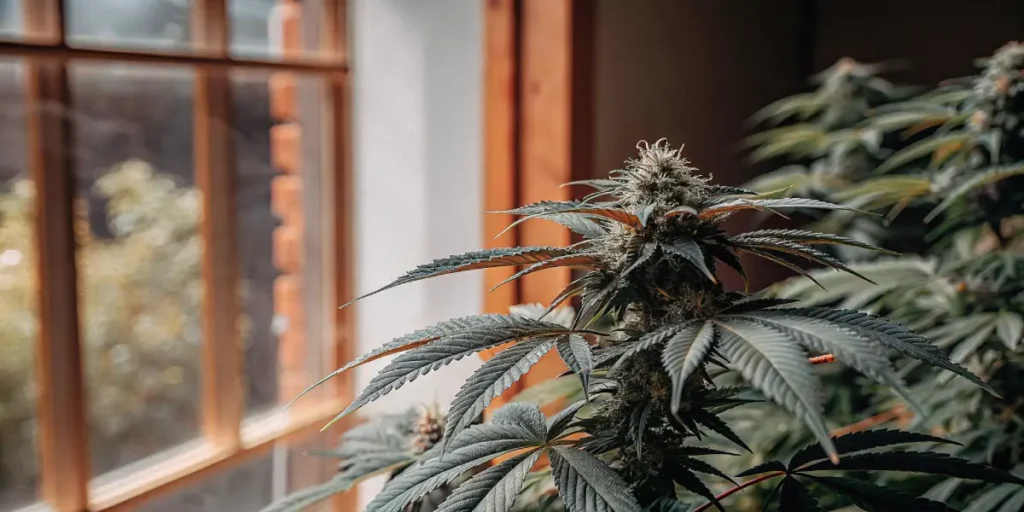
Best Time to Top Autoflower Cannabis
Timing is everything when it comes to topping autoflowers. The best time to top autoflower cannabis is early in its vegetative stage. This allows the plant to recover and continue its growth cycle with minimal disruption.
Aiming to top your plant around the third week of growth can be effective. At this point, the plant is usually strong enough to handle the stress. Keep in mind that different strains might have varying tolerance levels.
Determining the best time to top autoflower cannabis involves understanding the specific growth patterns of your strain. Observing the plant’s initial development can provide insights into its readiness for topping. Plants that exhibit vigorous growth and strong stem development are often better candidates for successful topping.
Besides, the best time to top autoflower cannabis may vary based on environmental conditions. Cooler temperatures and stable humidity levels can support quicker recovery post-topping. Adjusting the grow environment to reduce stress factors during and after the topping process can enhance the plant’s ability to thrive. Strains like Oh My Thai Auto, known for their vigorous growth and strong resilience, respond especially well when topped under optimal conditions, making it easier for growers to maximize yields and maintain plant health.
Topping Autoflower Cannabis Plants for Higher Yield
When done correctly, topping can lead to higher yields by promoting more bud sites. This technique encourages the plant to distribute its energy across multiple branches, rather than focusing on a single cola.
For growers cultivating strains such as Gelato Autoflower, topping can help in achieving an even canopy. This maximizes light exposure and allows for optimal photosynthesis, potentially resulting in a better harvest.
Topping autoflower cannabis plants for higher yield can be particularly beneficial in maximizing space efficiency. By promoting horizontal growth, topping allows growers to utilize available space more effectively, potentially resulting in a denser canopy and increased bud production.
Moreover, topping autoflower cannabis plants for higher yield involves careful planning and execution. To achieve the desired outcome, it’s essential to combine topping with other cultivation techniques like precise nutrient management and controlled environmental conditions. This holistic approach can help in overcoming the limitations of the autoflower life cycle, ultimately leading to more bountiful harvests.
Real-Life Examples and Practical Tips
- Always use sterilized tools to prevent infection.
- Monitor environmental conditions closely after topping, as plants may become more sensitive to changes.
- Consider using low-stress training (LST) in conjunction with topping to further enhance growth.
In practice, some growers prefer to combine topping with other techniques. LST, for instance, involves bending and securing branches to encourage horizontal growth. This can be particularly effective in small grow spaces.
Remember, each plant is unique. Strains like Amnesia Haze Autoflower might respond differently to topping compared to others. It’s vital to adapt your approach based on the specific characteristics of the strain you’re growing.
Real-life examples highlight the importance of patient observation and adaptability. Successful growers often note that adjusting their approach based on initial plant responses can lead to better outcomes. This might mean modifying light schedules, nutrient plans, or even postponing additional training techniques to accommodate the plant’s recovery.
Practical tips from experienced cultivators also emphasize the value of documentation. Keeping detailed notes on the timing, tools used, and plant responses can provide valuable insights for future grows. This practice not only aids in improving individual plant outcomes but also contributes to a more refined and successful growing technique over time.
For growers working with robust autoflowering genetics such as Everglades OG Auto, maintaining clear records becomes even more beneficial. Tracking how this strain responds to lighting schedules, nutrients, and environmental adjustments can help maximize its potential, resulting in healthier plants and improved yields from one cycle to the next.
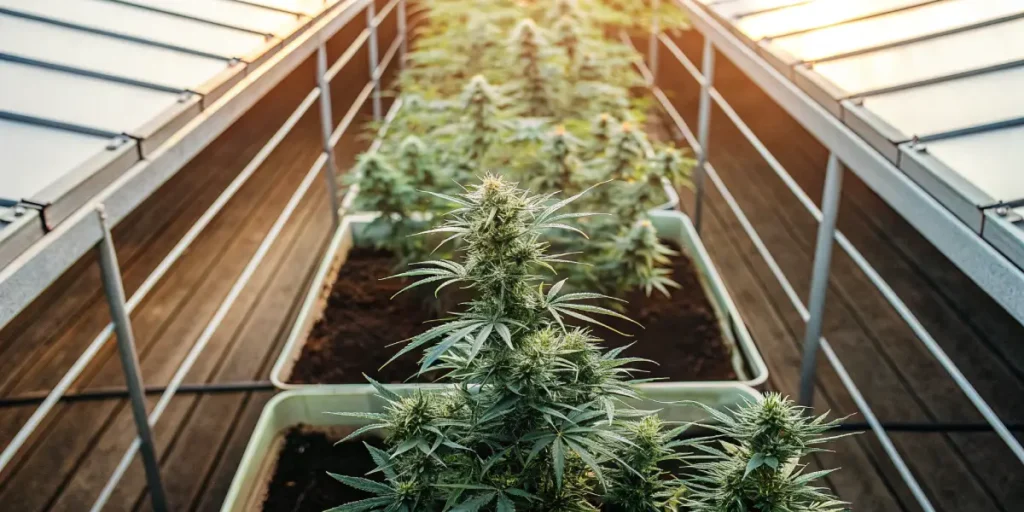
FAQ
Can topping autoflower cannabis plants stunt growth?
Topping has the potential to stunt growth if not done carefully. Autoflowers have a limited vegetative phase, so any stress can delay growth. This is why timing and technique are vital. Ensuring the plant is strong and healthy before topping can minimize the risk of stunted growth.
Monitoring your plant post-topping is essential. Look out for signs of stress such as drooping leaves or slowed development. Adjust your care routine accordingly, providing optimal nutrients and maintaining stable environmental conditions to support recovery.
Besides to monitoring, knowing the specific growth pattern of your strain can help mitigate the risk of stunted growth. Some strains may exhibit more resilience to topping, while others may require more delicate handling. Tailoring your approach can lead to more successful outcomes.
Can topping autoflower cannabis plants stunt growth? The answer is nuanced and depends significantly on the grower’s ability to manage stress factors. By fostering an environment conducive to recovery and maintaining consistent care, growers can reduce the potential for stunted growth and encourage robust development post-topping. For example, resilient varieties like Watermelon Gelato Auto offer strong vigor and quick recovery, making them a solid choice for growers experimenting with light training or topping techniques.
Is topping necessary for all autoflower strains?
Not all autoflower strains require topping. Some naturally grow into a bushy structure, making topping unnecessary. It’s important to understand the growth characteristics of your chosen strain. For instance, strains with naturally short and compact growth might not benefit as much from topping.
Researching the specific needs of strains like Critical x AK47 Autoflower can help you decide. Observing how your plants develop in the early stages will provide insights into whether topping will be beneficial for your grow setup.
When considering whether topping is necessary for all autoflower strains, it’s crucial to prioritize the strain’s natural growth tendencies. Some strains are bred for compactness and may not require additional manipulation to achieve optimal growth. Understanding these inherent characteristics can guide your decision on topping.
Additionally, the decision to top should also factor in the grower’s specific goals. For those aiming for maximum yield in a limited space, topping might be more beneficial. However, for those who prioritize less interference and a more natural growth cycle, it might be preferable to avoid topping altogether.
How do I know if my plant has recovered from topping?
Recovery from topping is usually evident when your plant resumes vigorous growth. New leaves and branches should begin developing within a few days to a week, especially in resilient genetics like Sweet 16, known for its strong structure and fast bounce-back after training. The plant’s overall health, including leaf color and stem strength, are reliable indicators of successful recovery.
Pay close attention to the plant’s response in the days following topping. If growth appears stagnant, reassess environmental factors such as light, temperature, and humidity. Adjusting these can help facilitate a quicker recovery.
To determine if your plant has fully recovered from topping, consistent observation is key. Look for signs of robust new growth and check that the plant is not exhibiting signs of nutrient deficiency or environmental stress. These indicators can confirm a successful recovery.
Besides to observing physical growth, healthy root development is a sign of recovery. Ensuring that the root system remains vigorous and undisturbed can support the plant’s overall resilience, helping it to bounce back from the stress of topping more effectively.
Can I top autoflower cannabis more than once?
Topping more than once can be risky with autoflowers due to their time constraints. Each topping session introduces stress, which can cumulatively affect growth and yield. It’s generally recommended to limit topping to once during the early vegetative stage. For example, an autoflower like Thai Dream Auto benefits from minimal stress training, allowing it to focus on fast, healthy growth and maximizing its potential yield.
If you decide to top more than once, ensure the plant has fully recovered from the first topping. Monitor its growth closely and provide optimal care to encourage resilience. This cautious approach can help mitigate potential negative impacts.
Before attempting to top autoflower cannabis more than once, consider the plant’s health and growth rate. Only vigorous and healthy plants should be subjected to multiple topping sessions, as weaker plants may struggle to recover sufficiently before flowering begins.
For growers who choose to top autoflower cannabis more than once, timing is essential. Space out the topping sessions to allow adequate recovery time, and continually assess the plant’s response to ensure it is not experiencing undue stress or stunted growth.
What are alternatives to topping autoflower cannabis plants?
Low-stress training (LST) is a popular alternative. This method involves bending and tying down branches to encourage a wider canopy. Unlike topping, LST doesn’t involve cutting, thus reducing stress. It can be a gentler way to achieve similar results in terms of light exposure and bud site development. Strains like Ice Cream Cake Auto, known for their strong structure and fast autoflowering cycle, respond particularly well to LST, making it easier for growers to maximize yield with minimal stress on the plant.
Super cropping is another technique, which involves gently pinching and bending stems to strengthen them. This can enhance nutrient flow and strengthen the plant without the stress of topping. Exploring these alternatives can provide flexibility in optimizing your grow strategy.
Alternatives such as LST can also be combined with other training methods like defoliation, which involves removing certain leaves to improve light penetration and air circulation. This approach allows for more control over the plant’s structure without the potential drawbacks of topping.
Exploring alternatives to topping autoflower cannabis plants can also involve the use of trellises or SCROG (Screen of Green) setups. These methods help manipulate the plant’s growth direction and support without the need for cutting, making them ideal for growers concerned about plant stress and recovery times.


